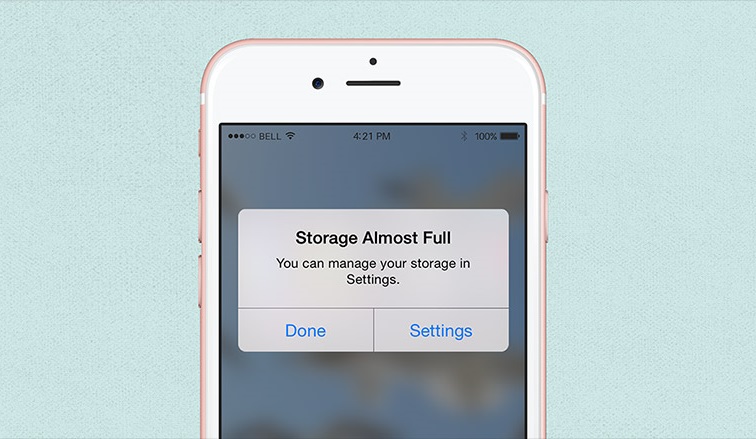Domain names are much more than a means to and end of building a website, and here are 3 reasons why domain names will continue to prevail in 2017.
#1 Domains > Apps
When apps came along people thought it might be the end of the domain name industry. The web started moving to mobile-first and in order to accommodate customer needs brands started rolling out apps for their websites. Nowadays there is literally an app for everything. What they didn’t anticipate is that people don’t want to have an app for everything. Although the UX design of apps is much better for mobile we don’t want to have apps we hardly ever use adding clutter and taking up our precious storage space!

When it comes to deciding between deleting a picture of my grandma and deleting an app, grams always stays.
#2 Domains as a marketing tool
Before registering a domain name for your business one of the tests you should conduct to make sure it is a good name is a radio test. Radio advertising is still a huge marketing avenue whether it is the radio on the morning commute or a music streaming service like Pandora. In order to be successful, the domain name has to be memorable and easy recalled which is why New Domains are a top choice for marketing campaigns today. A New gTLD for San Diego Community College District like SanDiego.COURSES might resonate better with a college student than SDCCDOnline.NET.
A domain name created for a specific campaign looks better on printed marketing materials and when shared on social media platforms. For example, this past weekend we could all pretend we were at Coachella by visiting Live.Coachella.COM, but how much better does Coachella.LIVE sound for an advertising campaign? Simple, fun and to-the-point, no need for subdomains!
Speaking of things we want but can’t have, how many of us ordered girl scout cookies through a domain this year? Nuff said.

#3 Domains to prevent counterfeiting
“The global trade in counterfeit and pirated goods is estimated to generate between US $923 billion to $1.13 trillion annually.” – Global Financial Integrity
There are two types of counterfeit markets. The primary market involves intentional deceit of the customer. The counterfeit products seem genuine and the price is fairly similar, therefore the customer is unaware that they are purchasing a counterfeit or pirated item. The second market is where the customer intentionally purchases items that are not legitimate for a much lower price.
Both types of counterfeiting can be harmful to the brand and to the customer. A brand’s reputation can be tarnished by unsafe and harmful counterfeit goods that lack the quality and standards the brand holds itself to. Just ask Kylie Jenner.
https://www.instagram.com/p/BMDGtKwlQN3/
https://www.instagram.com/p/BMDHFj0FM7G/
“Everywhere else is fake. Make sure you guys check the URL because these other websites are selling fake product. It might look exactly like mine, but it’s not mine.”
Domain names are essential to brands for building an online presence and generating revenue. Along with the benefits comes the threats of counterfeiting and cybersquatting. The ease and availability of counterfeiting vary from country to country depending on factors such as consumer demand, copyright, legality, and enforcement.
Tips for protecting your brand from brand-hijackers trying to profit from your hard work include:
- Adding brand protection and trademark monitoring to combat counterfeit websites, monitor unauthorized retailers, prevent domain name and trademark hijacking, and the diversion of consumer traffic to unauthorized or malicious destinations.
- Registering your trademark and copyright with the Trademark Clearinghouse to prevent cybersquatters from profiting off of your brand name.
- Take a hint from Kylie’s playbook and have a conversation with your customers about the harm of counterfeit products, and remind them what makes your brand irreplaceable!